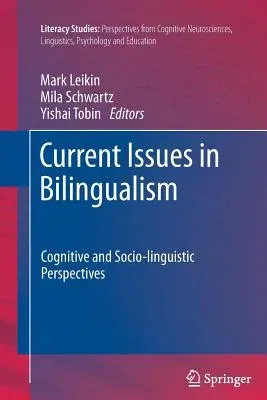Current Issues in Bilingualism: Cognitive and Socio-Linguistic Perspectives (2012)Paperback - 2012, 26 January 2014

Qty
1
Turbo
Ships in 2 - 3 days
In Stock
Free Delivery
Cash on Delivery
15 Days
Free Returns
Secure Checkout
Part of Series
Literacy Studies
Print Length
266 pages
Language
English
Publisher
Springer
Date Published
26 Jan 2014
ISBN-10
9400799284
ISBN-13
9789400799288
Description
Product Details
Book Edition:
2012
Book Format:
Paperback
Country of Origin:
NL
Date Published:
26 January 2014
Dimensions:
23.39 x
15.6 x
1.47 cm
ISBN-10:
9400799284
ISBN-13:
9789400799288
Language:
English
Location:
Dordrecht
Pages:
266
Publisher:
Series:
Weight:
390.09 gm

